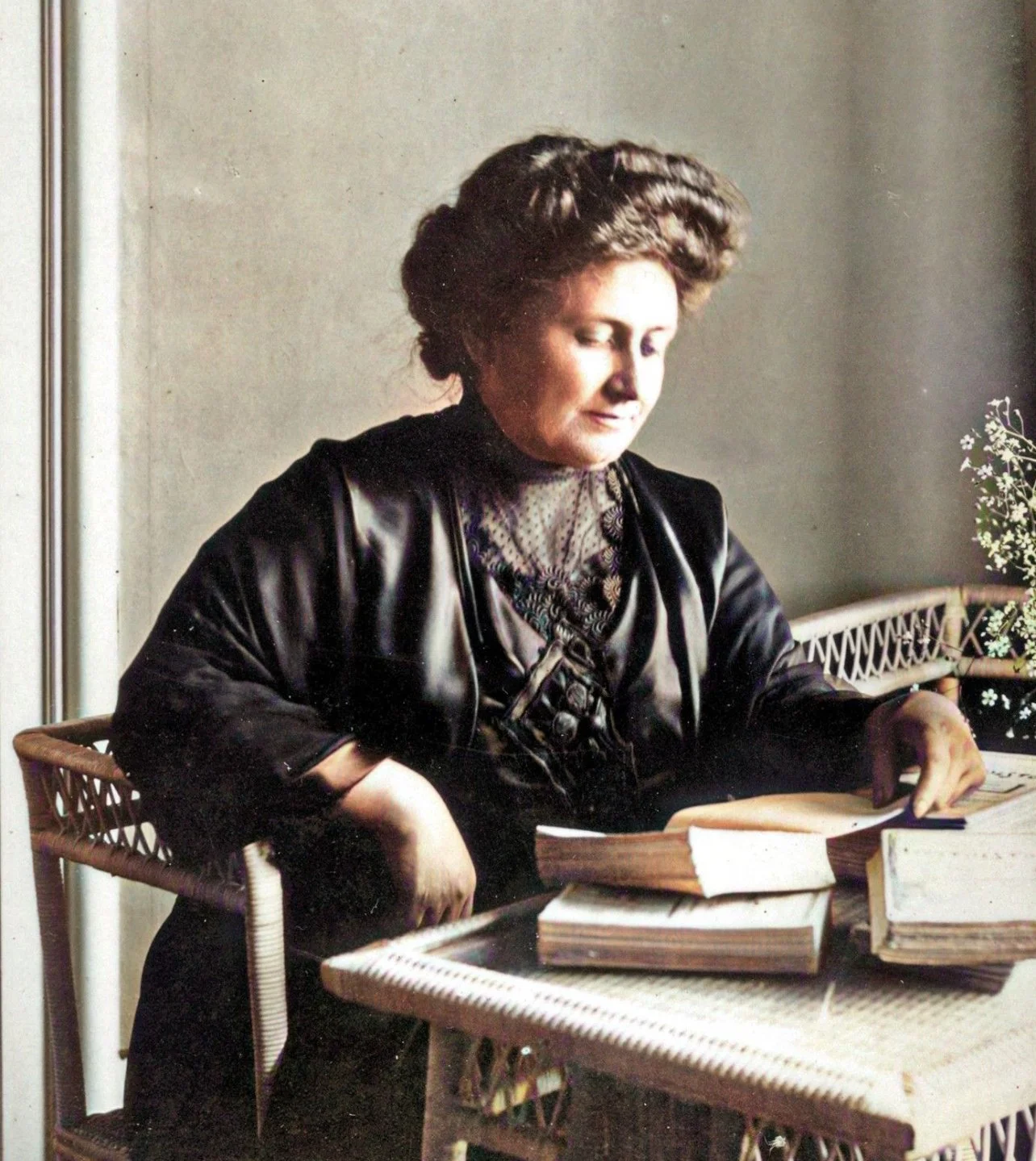The Montessori Method
Montessori education is built on a foundation that nurtures each child’s natural curiosity and love of learning. Our approach is guided by four core principles, which are child-led learning, a prepared environment, observation of progress, and freedom within limits. These are detailed in the visual below as well as interwoven throughout our curriculum.
Montessori philosophy and instructional methodology
Dr. Maria Montessori
[Image from U.S. public domain, 1913]
Children completing a practical life activity (dressing frames)
[Image from Montessori’s publication The Montessori Method, 1912]
Maria Montessori’s observations of children in her classrooms led her to develop an approach that focuses on the natural development of the child rather than traditional teacher-led instruction. She became internationally renowned for her innovative ideas and hands-on educational practices. More information about her life and work can be found at the Association Montessori Internationale (AMI) and the American Montessori Society (AMS).
In our classroom, we strongly adhere to the original principles laid down by Dr. Montessori. An important key of the Montessori educational method is the prepared environment. The idea behind this is that the teacher prepares activities which children are both interested in and developmentally ready for. Children are only allowed to work with these activities after they have been provided with a personal or group demonstration of the correct way to use the materials. Children are also taught the full process of completing an activity from beginning to end, starting with set up, progressing through the work, and cleaning up and putting everything back as they had found it.
At the early childhood level, children often begin their learning with the Practical Life activities, which are more simple and use primarily household materials children may already be familiar with, such as bowls, sponges, brooms, and cooking utensils. These activities help them develop their gross and fine motor skills, focus and concentration, and sense of order, helping them to develop the confidence to complete a full cycle of work independently. As children become familiar and proficient with these activities, they are then drawn to the more advanced materials in the Sensorial, Language, Culture and Science, and Mathematics curriculums. As they demonstrate ability to work with the materials in a respectful and independent way, children are provided freedom to choose their own work. In a Montessori classroom, the focus is on child-led learning in a respectful and disciplined learning environment.
Another key aspect of Montessori philosophy is observation. Throughout each day, the teacher will carefully observe and take notes concerning the work of each child, in order to determine the child’s progress in the activities he or she chooses to work on. The teacher uses these observational notes to provide support for the child, including changing activities offered if the child seems to be struggling or losing interest. A summary report of the child’s progress is provided to parents both at the end of each week and in a quarterly parent-teacher conference.
Since the Montessori philosophy prescribes a child-led instructional format, teacher-led instruction is kept to a minimum. It is limited to a brief circle time in the beginning and/or closing of the day. During this time, the teacher may work on the calendar, hold a class discussion, model or reinforce a specific behavior, introduce songs, or teach a short grace and courtesy lesson. The majority of time is reserved for independent work, followed by outdoor time, lunch, and closing/pick up.
If this approach sounds like a good fit for you and your child, please apply today!
“Education is not something which the
teacher does, but a natural process
that develops spontaneously in the
human being.”


